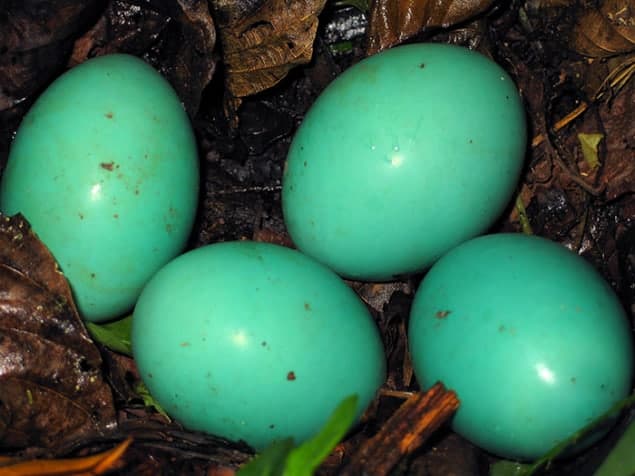
The family of chicken-sized birds native to South America called tinamous lay brightly coloured eggs that are some of the glossiest in nature. Now, an international team of scientists has discovered the secret to the eggs’ mirror-like sheen, which rivals that of highly polished man-made materials.
“Imagine a shiny, brand new car. The eggs of these birds are so shiny that they are reflective,” says Branislav Igic, an avian biologist from the University of Akron in Ohio, who did the work with colleagues in the US, the Czech Republic and New Zealand.
In the new study, Igic and his team used a combination of microscopy and chemical analyses to show that the glossiness of tinamou eggs is down not to pigments, but rather the nanostructure of the shell itself. In particular, the outermost layer of the shells, called the cuticle, is extremely smooth and composed of a unique mix of proteins and chemical elements such as calcium carbonate and calcium phosphate.
Smooth reflection
“A smooth surface means that light gets reflected back at the same angle that it comes in at,” says Igic. “A rough surface has tiny valleys and hills that scatter the light in all directions, and that leads to a more matt appearance.”
The study also reveals that the blue eggs of the great-tinamou bird are weakly iridescent – that is, the colour perceived by the viewer changes depending on the angle of observation and illumination. This optical effect, common in moth and butterfly wings, has never been seen in bird eggs before. “It’s a very subtle iridescence,” says Igic. “Human eyes may not be able to discern it, but birds have better colour acuity, so they are probably more sensitive to these changes in colour.”
Silvia Vignolini, a chemist at the University of Cambridge in the UK who studies colours in nature and who was not involved in the study, says the work sheds new light on how different bird species use combinations of materials and structural features to create various optical effects.
Surprising function
Mary Stoddard, an evolutionary biologist at Harvard University in the US who also did not participate in the research, says that the new findings reveal a surprising function for egg cuticles: “Typically, we think about the cuticle’s function in protecting the egg from bacteria or in containing surface pigment, but here the researchers show that it can also play an important role in producing the egg’s sheen.”
It is still unclear, however, why tinamous – and birds in general – lay conspicuous eggs that could make them more attractive to predators. In the case of tinamous, one important clue may be that it is the males and not the females who incubate the eggs.
Blackmailing males
“One idea”, says Igic, “is that by laying shiny, conspicuous eggs, females are blackmailing the males into incubating the eggs for longer periods, because otherwise the eggs would be easy targets for predators.”
Another possibility is that the eggs’ shininess is a by-product of a mechanism that reduces water exposure. “A polished surface might be better at repelling water, but this hypothesis hasn’t been tested yet so we don’t know for sure,” says Igic.
The research is described in the journal Interface.



